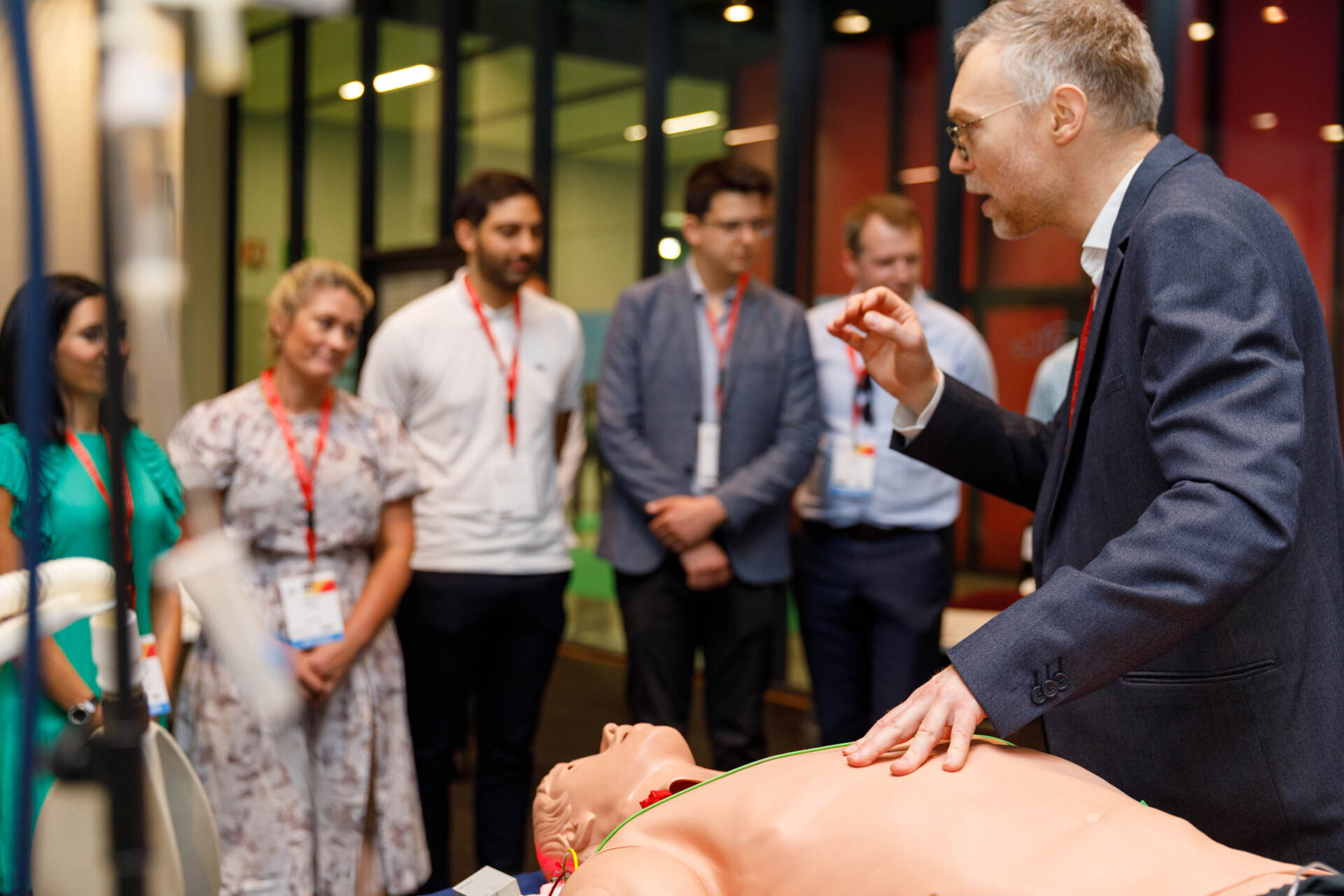High-fidelity
Simulation Training
The ESAIC recognises the value and importance of this educational methodology and its value to safer patient care. It works to promote simulation training for residents and specialists throughout Europe.
ESAIC Simulation Committee
The ESAIC Simulation Committee is active in building bridges, not only with other committees within the ESAIC but also between centres all over Europe. The committee is comprised of some of the most experienced simulation experts in Europe. It includes members who are directors at several key simulation centres, and some are past presidents of SESAM.
The committee works to promote the effectiveness of simulation training and its implementation into national anaesthesiology curricula across Europe.
Simulation is an interactive learning method where one can apply, learn and train knowledge and skills in specific situations. It also allows for training of nontechnical competencies, which are the social and cognitive skills, such as communication, collaboration, leadership, situational awareness and decision-making. Of note, anaesthesiologists have been pioneers in the use of high-fidelity mannequins to study human factors and improve crisis resources management skills for critical situations.
Integration of simulation-based education in anaesthesiology specialist training
The Simulation Committee works to define guidance on how SBET can be integrated into residency training curricula across Europe.
Committee members recently took part in an Utstein meeting to establish the foundation for integrating SBET into the anaesthesiology training curriculum for residents. This work will allow countries that wish to implement this change to have guidelines and recommendations as to how to do this on a practical level.
SimLab

Members of the Simulation Committee support the SimLab that takes place every year at Euroanaesthesia. Here delegates have a chance to sign up to take part in simulation scenarios using high-fidelity mannequins and receive debriefing from experienced simulation faculty.
SESAM – The Society for Simulation in Europe

The Simulation Committee strategy aligned clearly with SESAM’s mission. They will collaborate to promote the use of simulation and devise research to further understand the effectiveness and best use of this unique teaching methodology.
ESAIC and SESAM are currently working in collaboration with the Romanian Society of Anaesthesia and Intensive Care (SRATI) to develop faculty for hi-fidelity simulation and to work towards a national curriculum for simulation training for their anaesthesia trainees.

What is the status of Simulation Based Education Training (SBET) in Europe?
The European Society of Anaesthesiology and Intensive Care (ESAIC) instituted the ESAIC Simulation Committee to improve the use of SBET in anaesthesiology across Europe. The Simulation Committee decided to conduct a survey to establish an inventory of the current regulatory policies, recommendations, implementation and use of SBET in national anaesthesiology/ intensive care medicine residency training curricula in all countries that are members of the ESAIC. This is the first survey done of this kind and is of immense value for informing the strategy of the committee’s work.
References
- Gaba DM, Howard SK, Fish KJ, et al. Simulation-based training in Anesthesia Crisis Resource Management (ACRM): a decade of experience. Simul Gaming 2001; 32:175–193.
- De Hert, Stefan. European simulation-based education and training in anaesthesiology and intensive care: still a long way to go?. European Journal of Anaesthesiology: June 2022 – Volume 39 – Issue 6 – p 487-488
- Savoldelli GL, Østergaard D. Simulation-based education and training in anaesthesia during residency in Europe: where are we now? A survey conducted by the European Society of Anaesthesiolohy and Intensive Care Simulation Committee. Eur J Anaesthesiol 2022; 39:559–569.






